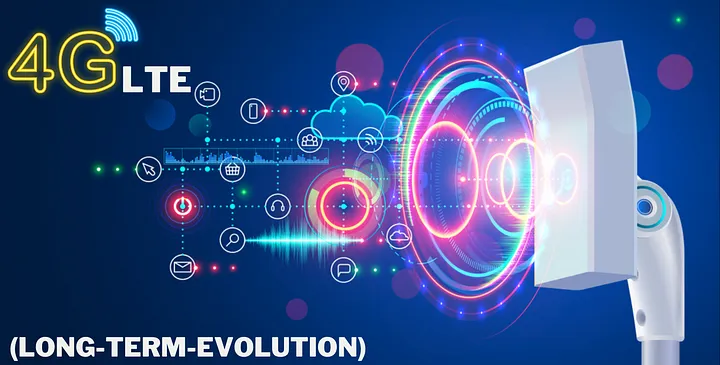Welcome to our series of articles dedicated to uncovering the intricacies of Video Surveillance in Healthcare. In this collection, we will delve into the various aspects of this vital technology, providing a solid foundation of knowledge to help you navigate the complexities of implementing and utilizing video surveillance systems in healthcare environments. Whether you are a healthcare professional, an IT specialist, or a decision-maker in the healthcare industry, this series aims to equip you with the information needed to make informed choices and optimize patient care.
What is Video Surveillance in Healthcare?
Video Surveillance in Healthcare refers to the strategic use of advanced camera systems to monitor and record activities within medical facilities. These systems employ a network of cameras that capture real-time video footage, enhancing security, patient safety, and overall operational efficiency. By integrating cutting-edge technologies, video surveillance provides a reliable means of monitoring healthcare environments and plays a vital role in ensuring the well-being of patients, staff, and visitors.
How does it apply to local LTE?
Local LTE (Long-Term Evolution) technology plays a significant role in the context of Video Surveillance in Healthcare. It enables the establishment of a private LTE network within healthcare facilities, offering dedicated wireless connectivity. This network infrastructure supports high-quality video transmission, ensuring seamless real-time monitoring, and allows for efficient data exchange between surveillance devices and monitoring stations. Local LTE enhances the performance, reliability, and security of video surveillance systems in healthcare settings.
What are the roles of Local LTE in Video Surveillance in Healthcare?
Local LTE in Video Surveillance in Healthcare serves multiple crucial roles. These include:
- Enhanced Connectivity: Local LTE enables robust and secure wireless connectivity, facilitating seamless communication and data transfer between surveillance cameras, monitoring stations, and other devices. This connectivity ensures uninterrupted video monitoring and swift response times in critical situations.
- Bandwidth Optimization: Local LTE networks are designed to prioritize traffic, ensuring that video surveillance data is given the necessary bandwidth for reliable transmission. This optimization minimizes latency, reduces network congestion, and enhances the overall performance of video surveillance systems.
- Increased Security: By leveraging local LTE networks, healthcare facilities can establish isolated and secure communication channels for video surveillance data. This helps protect sensitive patient information and prevent unauthorized access to the network, enhancing the overall security posture of the healthcare environment.
Use cases of Video Surveillance in Healthcare:
Video Surveillance in Healthcare finds applications in various areas within medical facilities, such as:
- Patient Monitoring: Video surveillance allows for continuous monitoring of patient areas, including waiting rooms, patient rooms, and critical care units. It aids in identifying patient needs, improving response times, and ensuring the well-being of individuals under medical care.
- Access Control: Surveillance systems play a vital role in managing access to restricted areas, such as medication storage rooms, laboratories, and operating theaters. Video monitoring helps prevent unauthorized entry, ensuring the safety of patients, staff, and valuable medical resources.
- Incident Investigation: In case of incidents or accidents within healthcare facilities, video surveillance provides valuable evidence for investigation purposes. It helps identify the sequence of events, aids in resolving disputes, and facilitates the implementation of corrective measures to prevent future occurrences.
What is the mechanism behind Video Surveillance in Healthcare?
The mechanism behind Video Surveillance in Healthcare involves a combination of advanced camera systems, network infrastructure, and monitoring software. Here’s an overview of the typical mechanism:
- Camera Placement: Surveillance cameras are strategically placed throughout healthcare facilities to capture video footage of critical areas such as entrances, hallways, waiting rooms, patient rooms, and parking lots. These cameras can be fixed or have pan, tilt, and zoom capabilities for flexible monitoring.
- Video Capture and Transmission: The cameras capture real-time video footage, which is then encoded and transmitted over a network infrastructure. The network can be wired (Ethernet) or wireless (Wi-Fi or Local LTE), depending on the facility’s requirements and coverage needs.
- Monitoring Stations: The transmitted video data is received and processed at monitoring stations equipped with specialized software. The software allows operators to view, manage, and analyze the video feeds from multiple cameras simultaneously.
- Storage and Retrieval: The video surveillance system typically includes a storage solution to archive recorded footage for a specified duration. This allows for easy retrieval and review of past events, if required, for incident investigation or legal purposes.
Why is Video Surveillance needed in Healthcare environments?
Video Surveillance in Healthcare is essential for several reasons:
- Patient Safety: Healthcare facilities have a duty to ensure the safety and well-being of their patients. Video surveillance helps in identifying potential risks, preventing incidents, and quickly responding to emergencies. It aids in monitoring patient movements, reducing the risk of falls, accidents, and patient elopement.
- Security and Loss Prevention: Healthcare environments can be vulnerable to security breaches, theft, vandalism, and unauthorized access. Video surveillance acts as a deterrent, helping to deter criminal activities and protect the facility’s assets, medical equipment, and valuable resources.
- Staff Protection: Video surveillance provides a means to enhance the safety of healthcare professionals by monitoring areas prone to violence or aggression, such as emergency rooms or psychiatric units. It helps in detecting and preventing workplace violence incidents, ensuring a safer environment for staff members.
- Compliance and Legal Requirements: Healthcare facilities must adhere to strict compliance and legal regulations concerning patient privacy, safety, and security. Video surveillance systems can assist in meeting these requirements by providing documented evidence in case of incidents, disputes, or investigations.
- Operational Efficiency: Video surveillance systems help optimize operational efficiency within healthcare facilities. They enable monitoring of workflow processes, staff performance, and adherence to protocols, leading to improvements in patient care, resource allocation, and overall operational effectiveness.
How does Local LTE improve the performance of Video Surveillance in Healthcare?
Local LTE offers several advantages that enhance the performance of video surveillance in healthcare:
- Reliable Connectivity: Local LTE networks provide dedicated wireless connectivity, ensuring stable and uninterrupted communication between surveillance cameras and monitoring stations. This reliability enables real-time monitoring and swift response to critical situations.
- High-Quality Video Transmission: With its robust bandwidth capabilities, Local LTE enables the transmission of high-quality video footage, allowing for clear and detailed monitoring of healthcare environments. This ensures that critical details are not missed during surveillance activities.
- Scalability and Flexibility: Local LTE networks can be easily expanded to accommodate additional cameras and devices as per the evolving needs of healthcare facilities. This scalability ensures that video surveillance systems can adapt to changing requirements and cover larger areas.
What are the security benefits of implementing Local LTE for Video Surveillance in Healthcare?
Implementing Local LTE for video surveillance in healthcare provides significant security benefits, including:
- Isolated Network: Local LTE allows healthcare facilities to establish a private and isolated network for video surveillance purposes. This network separation enhances security by preventing unauthorized access to sensitive video data, reducing the risk of data breaches.
- Encryption and Authentication: Local LTE networks employ encryption protocols and strong authentication mechanisms to ensure the privacy and integrity of video surveillance data. These security measures protect against unauthorized interception or tampering of video feeds.
- Enhanced Network Security: Local LTE networks provide advanced security features, including firewall protection, intrusion detection systems, and access controls. These measures safeguard against potential cyber threats, ensuring the integrity and availability of the video surveillance infrastructure.
How does Local LTE enable remote monitoring in Video Surveillance for Healthcare?
Local LTE facilitates remote monitoring capabilities for video surveillance in healthcare:
Real-Time Video Streaming: Local LTE enables the seamless streaming of real-time video feeds from surveillance cameras to remote monitoring stations. This allows authorized personnel to monitor multiple healthcare locations simultaneously, improving situational awareness and response times.
- Mobile Access: With Local LTE, authorized users can access video surveillance feeds remotely using mobile devices such as smartphones or tablets. This enables healthcare professionals to monitor critical areas or respond to emergencies even when they are not physically present on-site.
- Secure Remote Access: Local LTE networks employ secure authentication and encryption protocols, ensuring that remote access to video surveillance feeds is protected from unauthorized access. This enhances the security of remote monitoring activities.
Can Local LTE support other healthcare applications besides Video Surveillance?
Yes, Local LTE can support various other healthcare applications in addition to video surveillance, including:
- Telemedicine: Local LTE networks enable reliable and high-speed connectivity, supporting real-time audio and video communication between healthcare providers and patients. This facilitates telemedicine services, allowing remote consultations, diagnoses, and monitoring.
- IoT Integration: Local LTE can integrate with Internet of Things (IoT) devices used in healthcare, such as medical sensors, wearables, and tracking systems. This integration enables seamless data exchange, enhancing patient monitoring and facilitating efficient healthcare operations.
- Electronic Health Records (EHR): Local LTE networks can support secure and fast transmission of electronic health records, enabling healthcare professionals to access patient information promptly and efficiently. This promotes streamlined workflows and improves patient care.
In conclusion, Video Surveillance in Healthcare, coupled with the benefits of Local LTE technology, brings advancements in patient safety, security, and operational efficiency. By leveraging reliable connectivity, enhanced security measures, and the flexibility of local LTE networks, healthcare facilities can optimize their video surveillance systems to meet the unique challenges and requirements of the healthcare environment. The mechanism behind video surveillance involves strategically placed cameras, video capture and transmission, monitoring stations, and storage for easy retrieval of footage. The need for video surveillance in healthcare arises from the importance of patient safety, security, staff protection, compliance with regulations, and operational efficiency. Local LTE improves the performance of video surveillance by providing reliable connectivity, high-quality video transmission, and scalability. It also offers security benefits such as an isolated network, encryption, and enhanced network security. Additionally, Local LTE enables remote monitoring capabilities, allowing real-time video streaming and secure access from mobile devices. Beyond video surveillance, Local LTE can support other healthcare applications like telemedicine, IoT integration, and electronic health records. Understanding the mechanism and benefits of video surveillance in healthcare, along with the role of Local LTE, is crucial for healthcare professionals and decision-makers to make informed choices and create safer and more secure environments for patients and staff.




